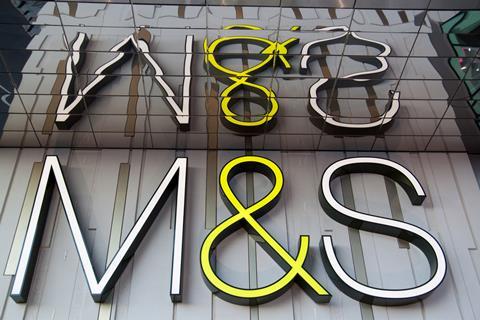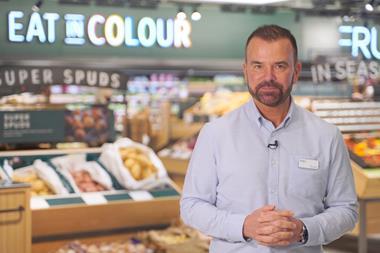Marks & Spencer has posted a rise in profits during its first half following “robust” trading across its food and clothing and home divisions.

The retailer registered an 11.3% uplift in statutory pre-tax profit to £208.5m in the 26 weeks to October 1.
Profit before tax and adjusting items dropped 23.7% year-on-year to £205.5m, while operating profit before adjusting items fell 22.7% to £280.7m.
Total sales during the period climbed 8.8% to £5.56bn.
M&S said its clothing and home business delivered an adjusted operating profit of £171.4m during the half – up 33.5% year on year – driven by “strong sales growth and full price mix”.
Clothing and home sales rose 14%, while like-for-likes grew 13.7%. Store sales jumped 18.8%, while online sales increased at the slower rate of 4.9%, although M&S said that was against “strong comparatives” from the previous year.
M&S’ food division suffered a 42.1% slump in operating profit to £71.8m during the six-month period, despite a 3% uptick in like-for-like sales.
It blamed the bottom-line erosion on “the combination of investment in value” and an “increase in operating costs”, which slashed its margins to just 2.2%.
M&S insisted it “did not pass through the full effect of inflation in its cost of goods” in its food business, which hit 11% during its first half.
Earlier this month, it locked the prices on 100 basket staples until 2023 in a bid to “sustain trusted value and provide assurance for our customers” during the cost-of-living crisis.
Ocado Retail, M&S’ online grocery joint venture with Ocado, suffered a £700,000 loss, compared with a profit of £28.1m during the same period a year ago.
Ocado Retail revenue fell 4.2% as consumer behaviour normalises following the coronavirus pandemic.
M&S insisted it “continues to trade well” heading into the crucial Christmas period.
In the first four weeks of its second fiscal half, clothing and home sales rose 4.2%, food sales were up 3% and international sales increased 4.1%.
It expects adjusted pre-tax profit for its full year to be “similar” to the expectations it set out at the end of 2021/22.
However, it warned it expected a “material contraction” in customer demand heading into its 2023/24 financial year.
It said: “The combined impacts of the cost-of-living squeeze and the most marked rise in the cost of doing business for many years are creating pressure on margins industry-wide.
“This will result in unviable capacity leaving the industry, creating opportunities for the leaner players that remain,” it added.
M&S boss Stuart Machin said: “Trading in the first half has been robust with both businesses growing ahead of the market, reflecting the beginnings of a reshaped M&S.
“In food, investment in trusted value has driven top-line growth, but short-term profit has been reduced, although the acquisition of Gist gives us control of one of our biggest cost and efficiency levers.
“Clothing has delivered a standout performance from a market-leading position in value with improving style credentials. The programme to renew and rotate our store estate is driving sales and quick paybacks, while the M&S app now accounts for over a third of online clothing and home sales.”
Machin added: “This progress means we face into the current market headwinds with an increased resilience and level of confidence. Looking beyond the current stormy weather, much is in our control and our mandate is clear – to step up the pace, accelerate change, drive a simpler, leaner business and invest in growth opportunities to build a reshaped M&S.”
- Don’t miss the best of the week – sign up to receive the Editor’s Choice every Friday



























1 Reader's comment